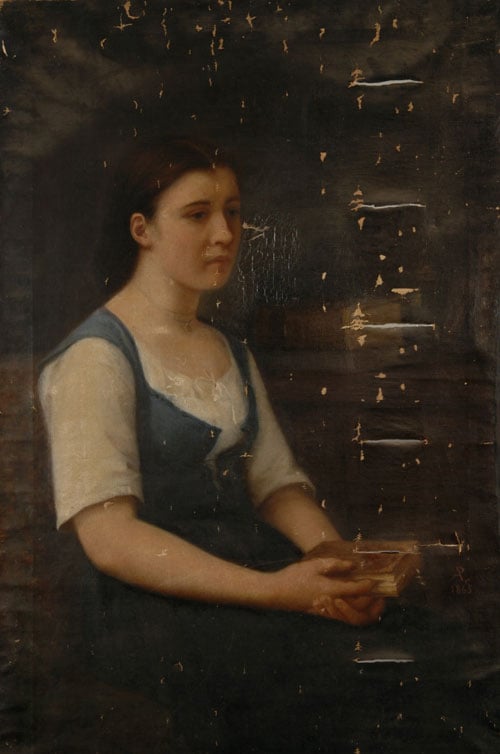
For the second time in recent years, France’s Musée de la Chartreuse Douai has recovered a long-lost painting, stolen during World War I, reports the Art Newspaper. Alix Marie de La Pérelle-Poisson’s Après la lecture (After Reading) (1865) was returned to the museum by the German government on April 12.
While art looted by the Nazis during World War II continues to make headlines regularly (see in particular artnet News reports on the ongoing Gurlitt saga), similar thefts from the First World War have been relegated to comparative obscurity.
As the world observes the 100th anniversary of the start of that war, French museums are hoping to bring the issue into the public consciousness.
The Douai’s collection was seized by the Germans in September 1918, which was when the painting disappeared. A private collector later donated the work to the Alte Nationalgalerie in 1959. Provenance researchers discovered its origins during a recent conservation project, leading the Foundation of Prussian Cultural Heritage in Berlin to return it to France.
In 2011, the United States also returned a painting to the Douai, as reported by the U.S. Immigration and Customs Enforcement. That work, Jules Breton‘s Une Fille de Pêcheur (A Fisherman’s Daughter), had been transferred to Belgium during the war. French officials tipped off Interpol when they learned it had been imported by a New York gallery in 2010, and ICE helped facilitate the piece’s restitution.
Currently on view at the Douai is “Sauve qui veut: des musées mobilisés, 1914-18,” an exhibition highlighting conservation efforts by World War I–era curators and archaeologists, particularly in northern France.
“War and Peace,” a larger project running through 2018, will spotlight cultural losses in the region throughout history. It will also publicize artwork that went missing during World War I through Interpol, the French Ministry of Culture’s communications site, Joconde, and by compiling a database on musenor.com.